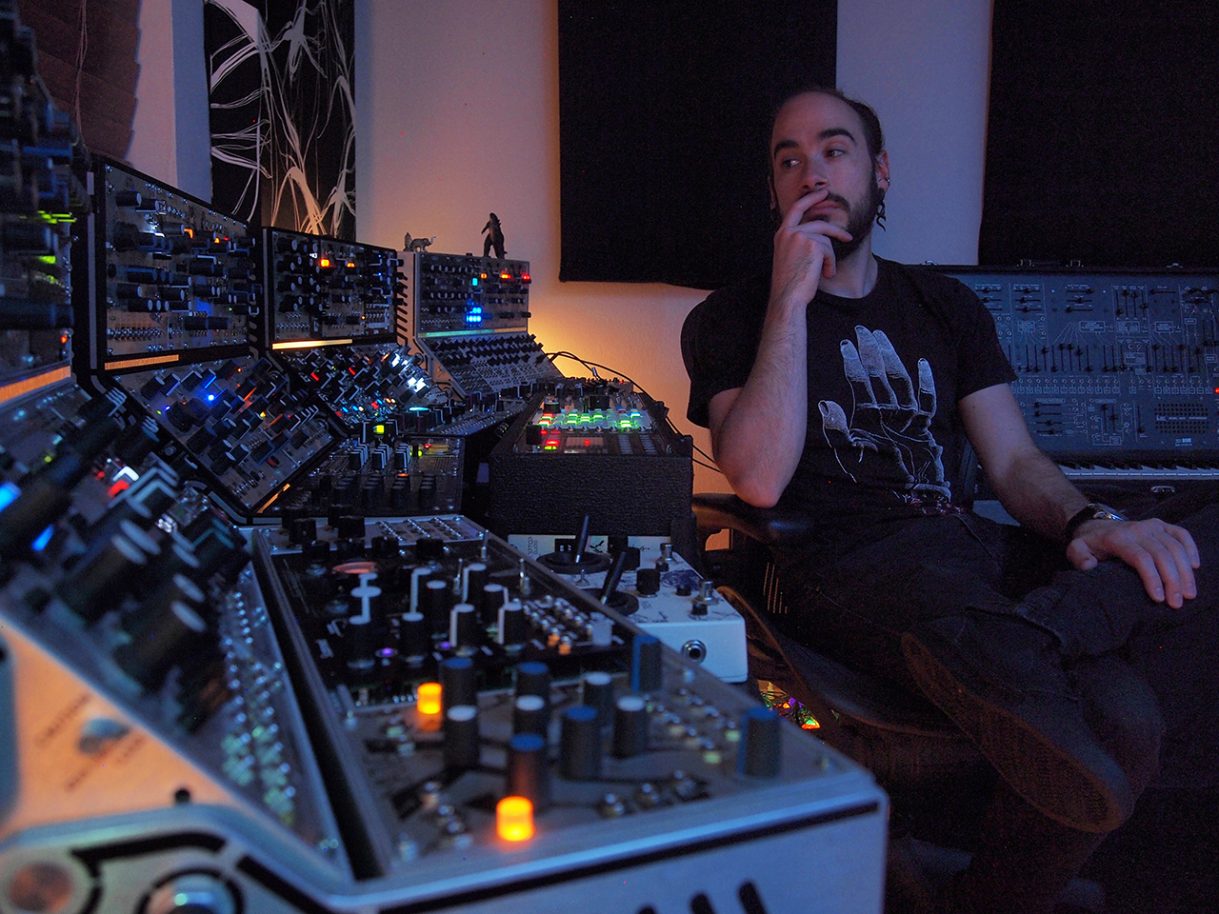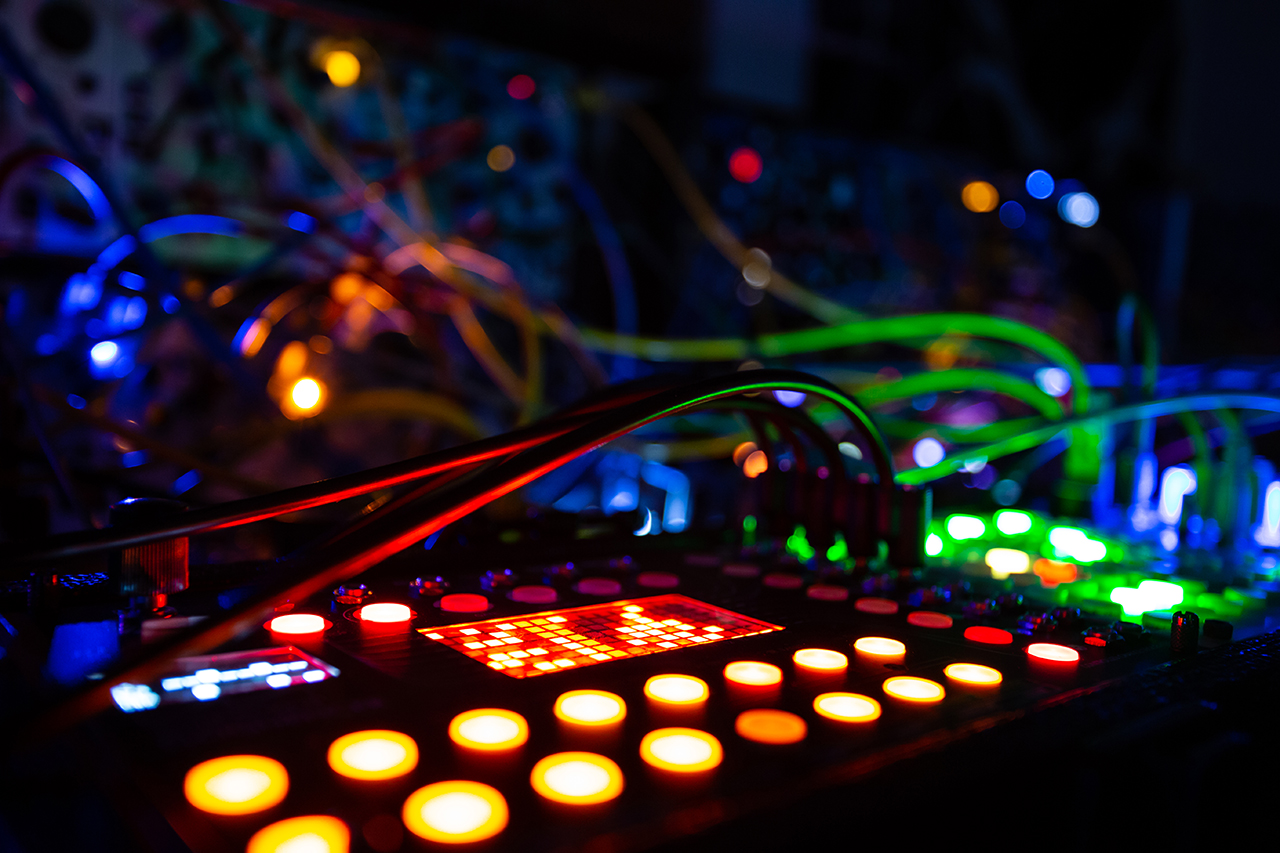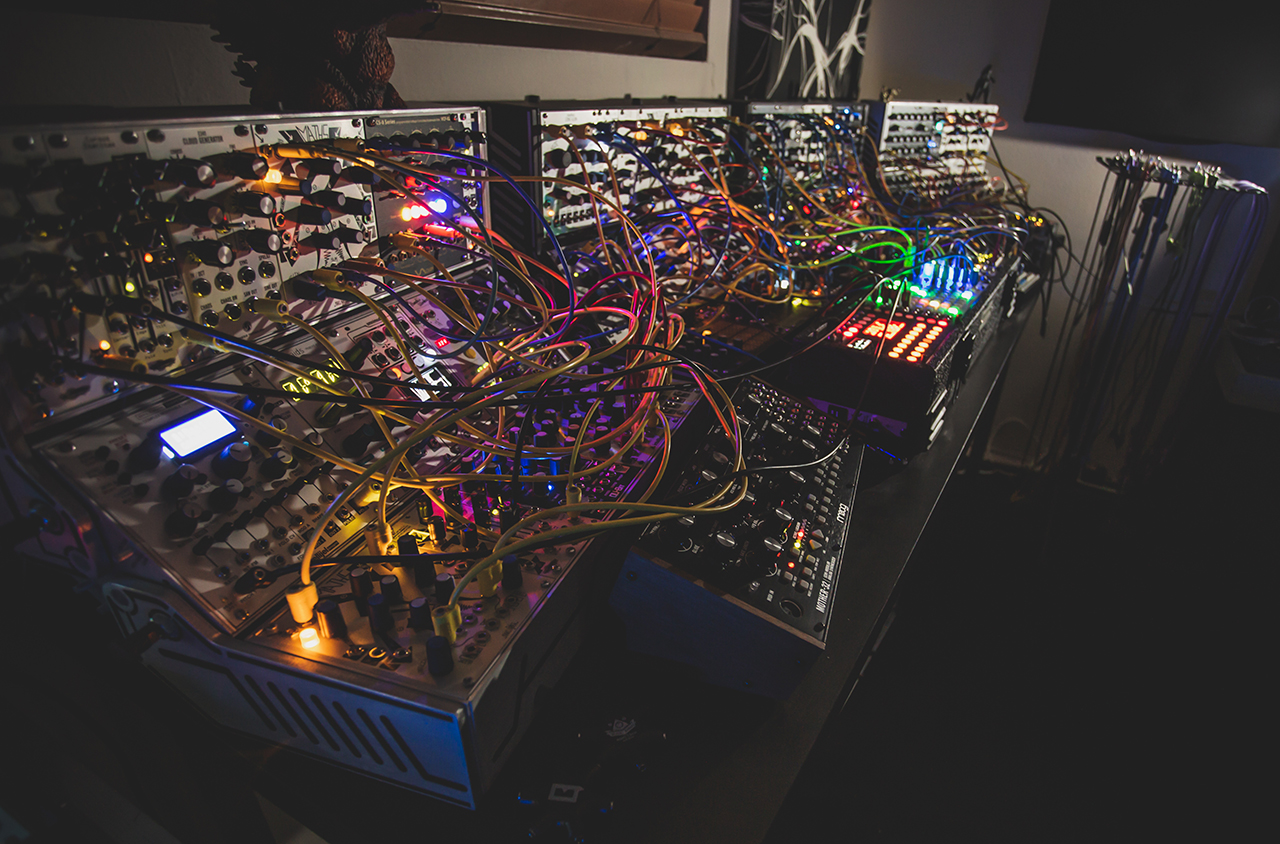We recently caught up with electronic musician, composer, and sound designer Anthony Baldino. Baldino’s record, Twelve Twenty Two, covers vast sonic territory; and his work is widespread, showing up in movies like Tenet and in trailers for blockbusters like Avengers: Infinity War.

What tools do you find in common between your sound design work and music creation? And which tools live in separate worlds?
Great question! This one is actually pretty tough. So much of my music has elements of sound design in it that the line between the two often gets blurred for me.
Some of the tools that are common between the two are my modular synths, various granular processing tools, and reverbs. Things that might live separately would be, for example, my Black Corporation synths for music creation, and my Sound Devices 744T and Schoeps CMIT5u for sound design/sound “gathering”; but even that pairing tends to find its way into my music somehow.
You’re skilled at designing all kinds of drum sounds, but particularly adept at building snare/clap noises – how has your work in sound design helped that?
Thanks! In the case of sound design: depending on the task at hand, I’m forced to focus on a single sound. Making that one sound unique enough to stand apart from other things that might be going on in the music or on screen is important. Because of all the time spent doing that, paying a lot of attention to the little details when I design my own drums has become a natural part of the process in my own music.
On Twelve Twenty Two, you use a wide variety of sound, but still with a similar sonic palette. What instruments and effects were the centerpieces of the album?
The initial idea for Twelve Twenty Two was to make a record that was purely “straight out of the machine” modular tracks or “mini performances”.
While there are several of those on the record, there were some ideas that were getting restricted by the amount of gear, like not having enough VCAs or physical inputs to record everything in a single pass. So I started to do an initial pass on the modular, record that, and then harvested additional sounds and layered those in. Long-winded way of me saying that modular synths were the foundational instrument.
As far as effects go, Blackhole® and UltraReverb are on every track. I also used a bunch of Soundtoys and iZotope plug-ins for distortion and filtering.
You talk about designing sound and designing music as worlds being created. What role do plug-ins play in those worlds?
Plug-ins play a huge role in those worlds, both on the creative side as well as the technical side. Oftentimes I like to start a track by designing drums, and to help guide me a bit, I try to make some sort of space or world for the drums to live in. For that, reaching for Blackhole is a no-brainer. There’s something very alive about it and there’s a level of immediacy when using it to create ambiances.
On a more technical level, plug-ins like Tverb or even SP2016 help add some physical dimension and depth to the sound so the track overall feels like its own physical space.
Some additional most-used plug-ins you rely on?
I reach for Omnipressor® when I need to destroy sounds and harvest hidden elements to use. Alongside my heavy-handed use of Blackhole and the SP2016 Reverb, I find myself using MicroPitch, H910 Dual Harmonizer® and Quadravox the most for my sound.
The Newfangled Elevate is an incredibly powerful tool. I use Punctuate quite a bit to make drums and synth pulses really punch. And then there’s Generate. I can honestly say I don’t have anything like that in my arsenal. It’s such a cool synth and really sounds fantastic.
You have a variety of pedals on your studio desk – when do you reach for a pedal versus using a plug-in?
I think it just kind of depends on the day. Both are equally useful in the creative phase but if I’m looking to get away from the computer I’ll reach for pedals and an all-hardware setup. Or if I’m preparing for a live show I’ll go for something like Space or the Strymon Big Sky.

In your mind, where does hardware end and software begin?
Another tough one! For me personally, I don’t know that it does, at least on the creative side. Even if I have all my synths recorded or field recordings in a session, or I’ve found a cool sound using some mangling software like the Glitchmachines stuff, I’ll send stuff back out to my modular to be processed. I guess the only time I’m using software exclusively is when I’m mastering something.

For you, is Eurorack useful as an idea generation tool, or as a canvas to paint ideas that already exist in your mind?
Both! I love Eurorack as a way to explore and find ideas. So many songs and some of my favorite live sets have come from just looking for ideas within my system. Because of doing that so frequently, Eurorack provides a solid canvas for ideas in my head because I’ve just gotten faster at making a sound using my Eurorack system than trying to design it using software. It’s certainly not the only method, but it just works for me.

And the same question goes for effects – idea generators, or tools to realize extant ideas?
Same answer, I think. All the stuff I do with Eurorack can directly translate to other software whether it’s Eventide, Native Instruments, Glitchmachines, etc. That being said, there’s also tons of software instruments or effects that do things that my modular system can’t, so they’re equally valuable in finding inspiration, as well as bringing to life the ideas floating around in my head.
How often would you say your setup changes incrementally, and how often do you overhaul your setup?
My setup is constantly changing incrementally. I’m always swapping out one module for another to see how a different oscillator or processing module changes my approach or the vibe of the patch. Recently, however, I’ve had this urge to just rearrange my entire system just to make it feel like a new instrument and force me to think differently.

Can you tell us about your experience working with Ludwig Göransson on Tenet?
Easily one of the most awesome projects I’ve been involved in. Ludwig is an amazing human and incredible thinker so it’s always a pleasure to work with him. There were some pretty wild sonic ideas that were explored and to watch how Ludwig shaped that project and to hear how it ended up was just incredible.
Having worked with Göransson on Venom as well, do you two have any secret weapons or go-to setups?
I don’t think there are any secret weapons except for the people in the room. So many people have the same exact tools as Ludwig or myself, but I think one of the most important parts in your own creative journey is working with people you respect, and watching how they think and approach different tools or ideas.
What’s next?
Hopefully another record very soon. I’ve got a handful of sketches that I’m shaping into complete thoughts and I’m excited to start filling in some of the gaps to shape those tracks into a complete body of work. I’m also looking forward to working on some new film projects.

Photo credits: Dean Paul DeLeon
Find Anthony Baldino on socials!




